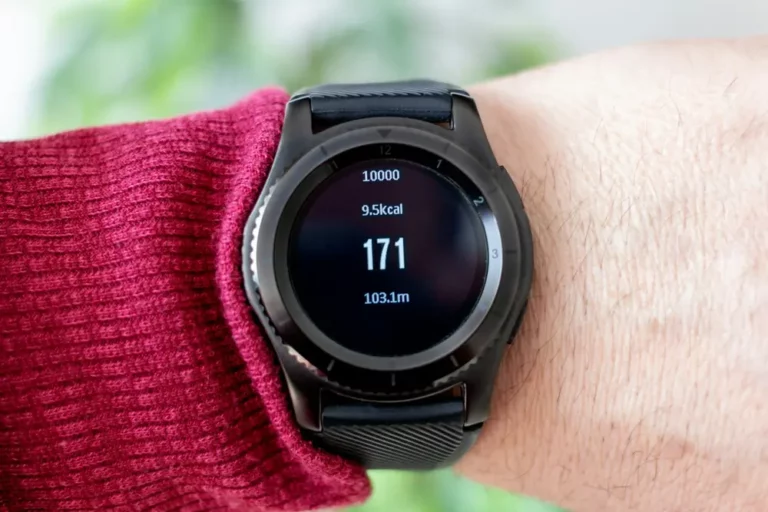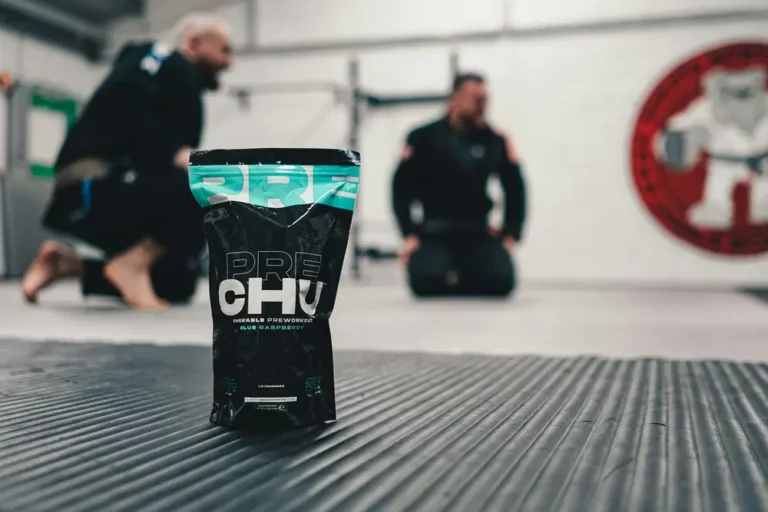Hip Thrust Machine vs Barbell: Which is Best for Your Glute Goals?
Hip thrusts are my go-to for sculpting that perfect booty, and I’ve tried it all: from Smith machines to classic barbells. Each has its charm, but also, its challenges. Whether you’re a gym newbie or a seasoned lifter, the choice between a hip thrust machine and a barbell can make a big difference in your workout routine.
Choosing the right equipment is more than just about what’s available; it’s about maximizing your gains and ensuring your efforts translate into results. I’ve explored both options, weighing their pros and cons, to help you decide which path to take on your journey to stronger glutes. Let’s dive into the world of hip thrusts and discover which method could be your ticket to booty gains.
Navigating the World of Hip Thrusts: Machine vs Barbell
When I first ventured into the world of strength training, I quickly noticed how hip thrusts had taken the fitness community by storm. It wasn’t just about squats and deadlifts anymore; hip thrusts had become just as crucial for building a strong, well-rounded lower body. Now, I’ve tried my fair share of equipment for executing this powerhouse move: from the classic barbell to the more modern hip thrust machine. Each has its own set of benefits and downsides, and I’ll delve into those to help you decide which might suit your workout style better.
The Rising Popularity of Hip Thrusts in Fitness
When I think about why hip thrusts have surged in popularity, it boils down to their effectiveness. They target the glutes directly, and I’ve seen firsthand how they can transform one’s lower body strength and aesthetics. Initially, I was all about squats, but it wasn’t until I incorporated hip thrusts into my routine that I truly saw a difference in my glute development.
The debate between using a hip thrust machine versus a barbell is more recent. The machine offers a level of comfort and stability that some find preferable, especially beginners or those looking to focus solely on their glutes without worrying about balancing a barbell. On the other hand, the classic barbell setup allows for a more natural range of motion and the ability to easily adjust weights. It’s fascinating to witness how this discussion reflects wider trends and preferences in the fitness community.
Key Elements of Effective Glute Training
Effective glute training, as I’ve learned through trial and error, requires attention to several key elements: progressive overload, proper form, and variation. Whether preferring the machine or the barbell, these principles remain constant.
- Progressive Overload: To grow stronger and more muscular, I steadily increase the weight I lift. This principle is easier to apply with barbells, given the granular control over weight increments.
- Proper Form: Maintaining the correct posture and movement is crucial. While machines can guide your motion to some extent, nothing has taught me the subtleties of body mechanics quite like navigating the balance and coordination needed for barbell hip thrusts.
- Variation: Integrating different exercises and equipment keeps my training exciting and challenging. Switching between the hip thrust machine and barbell ensures my muscles don’t get too accustomed to the same movements.
At its core, choosing between a hip thrust machine and a barbell hinges on personal preference, goals, and the specific dynamics of one’s body. I’ve embraced both options in my journey, appreciating what each brings to the table. Whether you’re just starting or looking to freshen up your routine, experimenting with both methods might be just what your training needs.
Hip Thrust Machine
Machine Features and Advantages
When I first laid eyes on a hip thrust machine, I was immediately drawn to its sleek design and the promise of simplifying one of my favorite exercises. The machine is specifically engineered for hip thrusts, making it an optimal choice for targeting the glutes with precision. One of the standout features is the padded lever, which provides a comfortable resting spot for the hips, significantly reducing the discomfort often experienced with a barbell. The adjustable weight stack is another huge plus, allowing for quick and easy changes in resistance without the hassle of loading and unloading weight plates.
Moreover, the machine’s design encourages proper form throughout the movement, with its fixed path of motion ensuring that you’re hitting the glutes effectively with each rep. It’s this combination of comfort, ease of use, and effectiveness that sets the hip thrust machine apart as a valuable tool in glute training.
Safety and Stability Considerations
Safety is a priority in any training regimen, and this is where the hip thrust machine truly shines. Its sturdy construction provides a solid base for lifting, minimizing the risk of tipping or wobbling that can occur with heavy barbell setups. Additionally, the machine’s design eliminates the need for a spotter, as the weight can be easily released if you find yourself unable to complete a rep. This aspect of safety and stability makes the machine an appealing option, especially when I’m aiming to push my limits without compromising on my well-being.
Suitability for Beginners and Those with Limited Mobility
I’ve noticed that beginners and individuals with limited mobility often find traditional barbell hip thrusts to be intimidating or physically challenging due to the setup and execution involved. The hip thrust machine simplifies the process, making it accessible to a wider range of fitness enthusiasts. The adjustable seat and weight stack cater to various body sizes and strength levels, ensuring that everyone can achieve a proper and effective workout. This accessibility factor is a huge advantage, as it opens up the benefits of hip thrusts to those who might otherwise miss out on this potent glute-building exercise.
Barbell Hip Thrusts
When it comes to building those glutes, barbell hip thrusts have long been a staple in my routine. Let’s dive deep into what makes them tick and how they compare to using machines.
Equipment and Setup Requirements
Setting up for barbell hip thrusts doesn’t require much, but it’s crucial to get it right. All you need is a barbell, some weights, and a bench. I’ve found that a padded barbell or a squat sponge can make a world of difference in comfort, too.
The process is simple: position the bench behind you and rest your upper back against it, with the barbell over your hips. However, the need for weights and a bench means it’s not as accessible as machines for those without a well-equipped gym. This is where I’ve seen many beginners get discouraged, as not all gyms have the right setup or enough space to comfortably perform this exercise.
Technique and Form Considerations
I can’t stress enough how important technique is for barbell hip thrusts. Proper form isn’t just about effectiveness; it’s about safety. To start, ensure your chin is tucked and your spine remains neutral throughout the movement. This reduces the risk of injury and ensures the focus remains on the glutes.
One thing I’ve noticed is the increased risk of form breakdown with heavier weights. Unlike machines that guide your movement, barbells require a bit more from your stabilizing muscles. This means that as you progress and add weight, maintaining the perfect form becomes more challenging. It’s a double-edged sword – more muscles engaged but a higher demand on your focus and body awareness.
Flexibility and Progression in Weight Adjustments
What I love about barbell thrusts is the sheer flexibility in adjusting weights. Whether you’re just starting or you’re aiming to hit new personal records, the barbell setup allows for precise weight modifications. This is something I find particularly advantageous for those on a strength progression path. You can incrementally increase the weight as you get stronger, which isn’t always as straightforward with machines due to fixed weight increments.
On the flip side, adjusting weights can be time-consuming, especially if you’re working in a busy gym and have to wait your turn for the equipment. It’s a minor inconvenience, but one that’s part and parcel of choosing barbell hip thrusts over machine variations.
Comparing Hip Thrust Machine and Barbell Hip Thrusts
When it comes to building those head-turning glutes, we’ve got a couple of fantastic options at our disposal: the hip thrust machine and the barbell hip thrust. Let’s dive deeper into the benefits and drawbacks of each to help you decide which might suit your fitness journey better.
Strength Potential and Muscle Activation
Using a hip thrust machine, I’ve found that the machine guides your movement, which can sometimes limit the engagement of stabilizing muscles compared to barbell hip thrusts. The smith machine, for example, allows for a smoother movement but might not let you go as deep as you might with free weights.
On the flip side, when I’m pumping out barbell hip thrusts, I’m not just working my glutes. My core and stabilizers are in overdrive, trying to keep everything in check. This increased muscle activation means that, in theory, I’m getting more bang for my buck with each lift. Plus, adjusting weights to progressively overload is easier with barbells, especially if you’re looking to increase strength over time.
Risk of Injury and Accessibility
I’ve got to touch on safety and access because they’re crucial in making an informed decision. Some folks argue against the smith machine, claiming it’s a bit rigid and can lead to injuries. However, if folks were constantly getting hurt, wouldn’t we see gyms phasing out these machines? In my experience, injuries have more to do with improper technique than the equipment itself.
As for accessibility, not everyone has a fully-loaded home gym with barbells, weights, and a bench. In this case, the hip thrust machine might be more accessible at a local gym, offering a safer and more controlled environment for beginners or those without the space for a barbell setup.
Cost Implications for Home and Gym Use
Let’s talk about the green stuff—money. Setting up a home gym with a barbell, weights, and a bench can be a bit pricey upfront. You’re looking at several hundred dollars, easily. In comparison, a gym membership that gives you access to a hip thrust machine (and a whole lot more) might be more cost-effective in the short term.
However, for those committed to the long haul and preferring the convenience of home workouts, investing in a barbell set could offer more versatility and the potential to save in the long term. After all, a barbell can be used for a multitude of exercises beyond hip thrusts, providing a solid foundation for a comprehensive strength training regimen.
Throughout this comparison, it’s clear that both the hip thrust machine and barbell hip thrusts have their place in a well-rounded glute training program.
Other Considerations
When deciding between a hip thrust machine and barbell hip thrusts, there are a couple of factors beyond just safety and efficacy to mull over. Let’s dive into some of these considerations that might sway your preference one way or the other.
Space and Equipment Availability
In my own experience, one of the stark differences between using a hip thrust machine and opting for the barbell version comes down to how much space you’ve got and what equipment is readily available to you. Having a dedicated hip thrust machine is fantastic if you’re a member of a well-equipped gym or you’ve got a spacious home gym. It’s a set-and-forget type of setup where the machine takes up a permanent spot.
On the flip side, barbell hip thrusts are a bit more DIY, requiring a barbell, weights, and a bench. It means you can essentially set up anywhere you’ve got the space. For those of you in smaller living spaces or crowded gyms, finding an open bench and enough room to set up might be a bit more challenging than walking up to a vacant machine. So, if convenience and accessibility are high on your list, the availability and space requirements of each option are definitely worth considering.
Personal Preference and Fitness Goals
I’ve found that personal preference plays a massive role in which equipment I gravitate towards on any given day. Much like the varied responses in rep preferences or the split decision on using pauses in workouts, it’s clear that what works best is highly individual.
If your primary goal is to increase muscle size, the standard 6-12 rep range favored by most bodybuilders might influence your choice. A machine might offer more stability for those reps, allowing for consistent tension on the glutes. However, if you’re like me and love the challenge of heavy lifts, feeling the completeness of the exercise through the engagement of additional muscles like the quads and hamstrings, then barbell hip thrusts with their flexibility in weight adjustments might be more up your alley.
Ultimately, the decision between these two options isn’t just about what’s safer or more effective universally, but what aligns best with your personal fitness journey, your goals, and yes, even your preferences for how you like to work out. Whether it’s the streamlined convenience and ease of use of a hip thrust machine or the versatile, raw feel of crushing it with a barbell, the best choice is the one that you’ll stick with and that keeps you motivated to push towards your goals.
Conclusion
Deciding between a hip thrust machine and barbell thrusts ultimately boils down to what fits your lifestyle and goals best. If you’re tight on space or prefer the convenience and safety of a machine, then that might be the way to go. On the other hand, if you love the flexibility of adjusting your weights and thrive on the versatility of free weights, barbell thrusts could be your best bet. Remember, the key to progress is consistency and enjoying your workouts. So choose the method that you’re most likely to stick with and that makes you feel strong and empowered. Happy lifting!
Frequently Asked Questions
Does using a hip thrust machine or barbell thrusts provide better glute development?
Both hip thrust machines and barbell thrusts can effectively develop the glutes. The choice depends on personal preference, available equipment, and specific fitness goals. Both methods require proper technique and progressive overload to see improvements.
Can I achieve similar results with barbell hip thrusts compared to using a machine?
Yes, barbell hip thrusts can yield similar results to using a hip thrust machine, provided you perform them with proper form and progressively increase the weight to challenge your muscles.
What are the main factors to consider when choosing between a hip thrust machine and barbell thrusts?
When deciding between a hip thrust machine and barbell thrusts, consider equipment availability, space, personal comfort and preference, and your specific fitness goals to determine which method aligns best with your needs.







